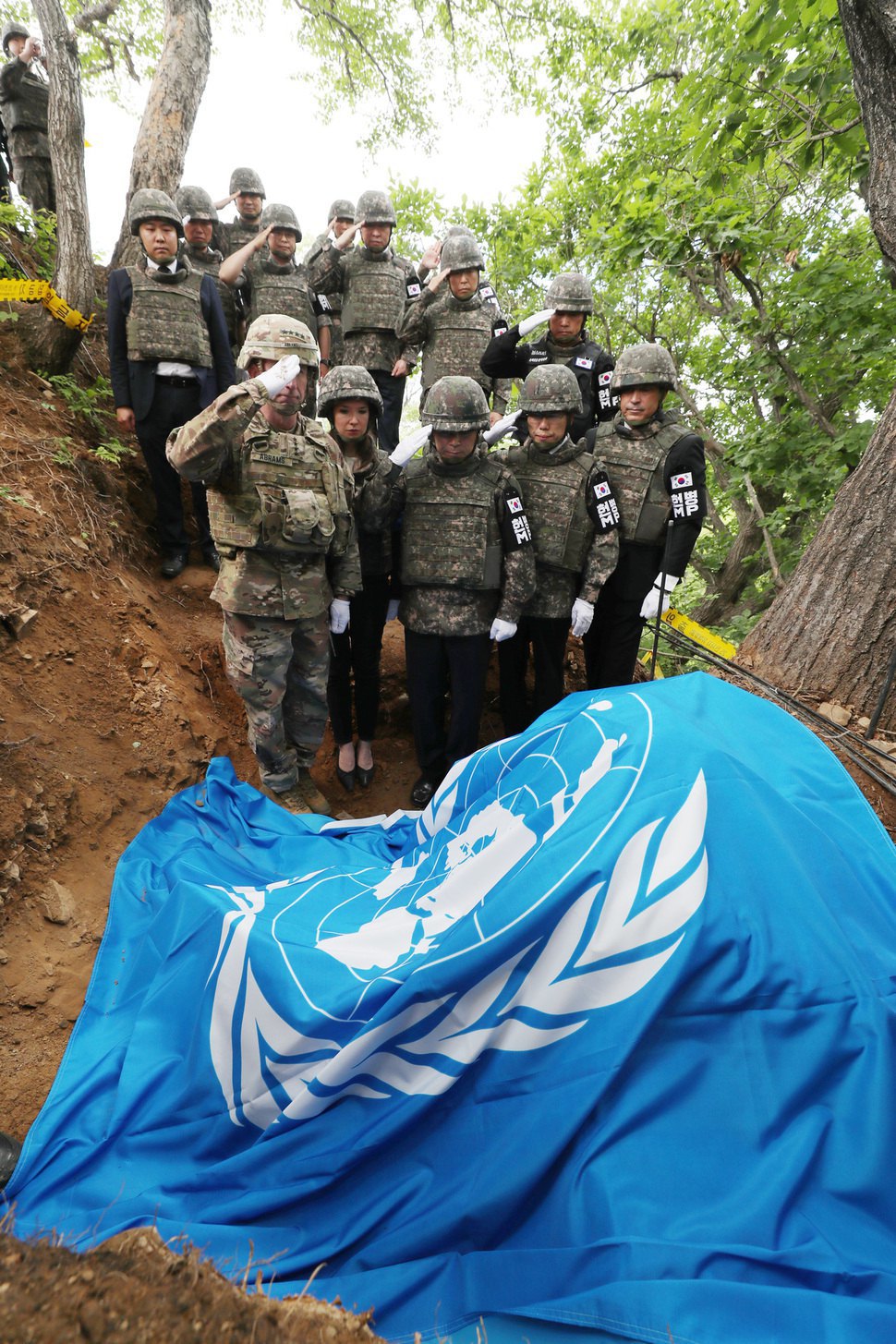 |
|
South Korean Minister of National Defense Jeong Kyeong-doo joins an excavation of UN soldiers remains near the DMZ’s Hwasalmeori (Arrowhead) Hill in Cheorwon County, Gangwon Province, on June 11. (Baek So-ah, staff photographer)
|
Despite the current impasse, the N. Korea-US Singapore summit changed Korea for the better
Over the past two years, US President Donald Trump came close to visiting the southern side of the demilitarized zone (DMZ) twice. The most dramatic attempt was made before the first US-North Korean summit. After holding his first summit with North Korean leader Kim Jong-un two days before, South Korean President Moon Jae-in proposed in an April 28 call with Trump that the US and North Korean leaders meet in Panmunjom. At the time, the proposed sites for the US-North Korean summit included Washington, DC, Trump’s Mar-a-Lago Resort, Pyongyang, somewhere in Europe, and Singapore. Trump’s immediate response to the proposal was positive after Moon explained the significance and benefits of holding the first US-North Korean summit in Panmunjom. Trump reportedly even mentioned the possibility of holding a trilateral (South Korea, North Korea, and the US) summit in Panmunjom. Trump responded so positively to the proposal that Moon even asked him to discuss it with his advisors before deciding. Two days after his call with Moon, the US president effectively added Panmunjom to the list of possible sites for the summit when he took to Twitter to ask, “Numerous countries are being considered for the MEETING, but would Peace House/Freedom House, on the Border of North & South Korea, be a more Representative, Important and Lasting site than a third-party country?” Ultimately, however, Trump threw his support behind advisors who thought that holding the summit in Panmunjom would put more attention on North and South Korea than on Trump, and Singapore was selected as the summit site. It is clear, however, that Trump had a lot of interest in Panmunjom as a potential summit site. The second attempt occurred on November 8, 2017, when Moon proposed that Trump fly to the DMZ by helicopter. Trump agreed. Thick fog, however, forced Trump’s helicopter to turn around before reaching the site. The first joint visit by a US and South Korean president to the DMZ in history was cancelled as soon as it had begun. A disappointed Trump reportedly said that he wanted to visit the DMZ next time he came to South Korea. Trump’s visit to the DMZ on June 30, if it does indeed occur, would be the US president’s third attempt to visit the area. This would not be the first time a US president has visited the DMZ, however. Most presidents have visited the DMZ’s Camp Bonifas and other parts of the zone separating the two Koreas: Ronald Reagan in 1983, followed by Bill Clinton in 1993, George W. Bush in 2002, and Barack Obama in 2012. What would make Trump’s visit to the DMZ special would be drastic changes in the situation on the Korean Peninsula compared to the past. US presidents have traditionally visited the DMZ as a way to show off the strength of the US-South Korean alliance and send a hardline message to North Korea during times when tensions between the US and North Korea were high. The current situation on the Korean Peninsula is, of course, different from when Trump tried to visit the DMZ back in 2017. Right after that failed trip to the DMZ, Trump raised tensions with North Korea by calling Kim Jong-un the “leader of the North Korean dictatorship” in his speech to South Korea’s National Assembly. Now, however, the trust that exists between Trump and Kim have formed the backbone of continued dialogue between North Korea and the US, despite the stalemate in US-North Korea negotiations. Military tensions on the Korean Peninsula have also significantly decreased. North and South Korea have respectively dismantled 10 guard posts inside the DMZ in accordance with the September 2018 Comprehensive Military Agreement (CMA) of last year, and all weapons have been removed from Panmunjom’s joint security area (JSA). The DMZ is, in short, being transformed into a symbol for peace, not confrontation.
 |
|
Hwang Joon-bum, Washington correspondent
|







